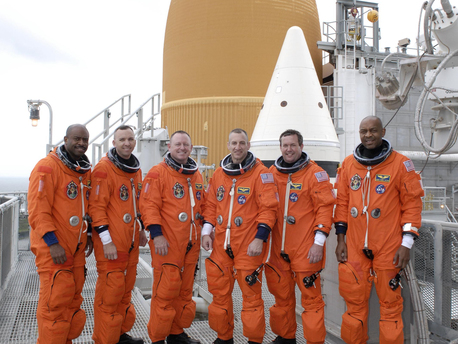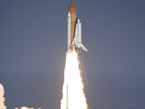Shuttle-Start erfolgreich
Ausbau der ISS geht weiter
 © NASA
|
Von links nach rechts: Leland Melvin, Randy Bresnik, Pilot Barry E. Wilmore, Commander Charles O. Hobaugh, Mike Foreman and Robert L. Satcher Jr.
DLR-Deutsches Zentrum für Luft- und Raumfahrt




